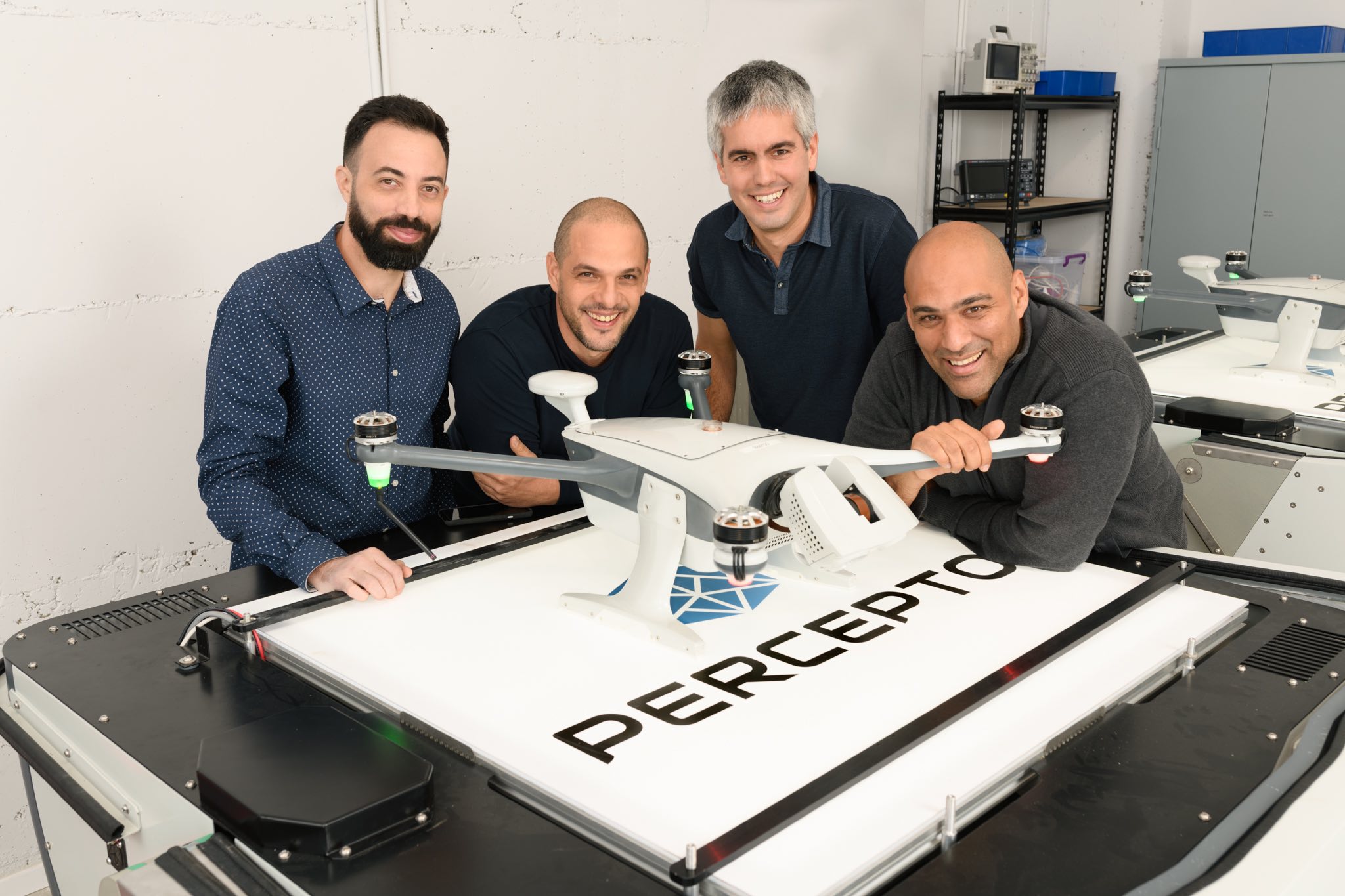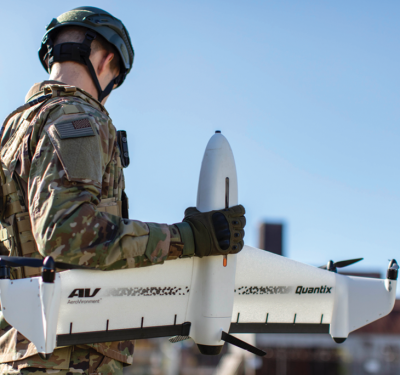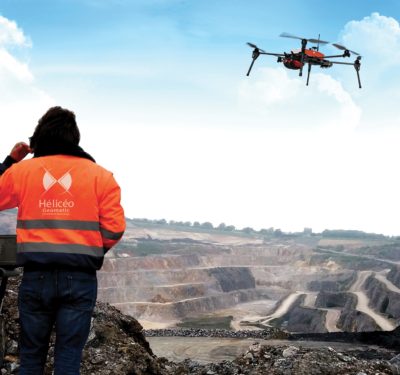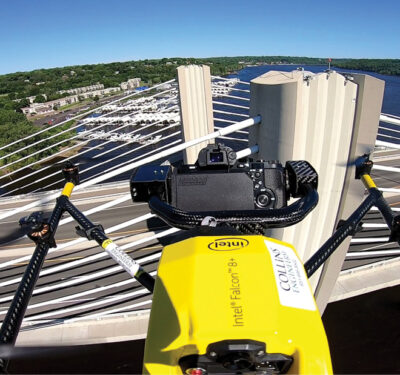
Dor Abuhasira was as surprised as the rest of us when the coronavirus erupted. The CEO of Percepto, a multinational drone-in-a-box company, has been providing an end-to-end “asset monitoring solution” for heavy industrial sites in 10 countries. Now he found himself filing for special permits overseas “to allow clients to operate drones from their homes, so they can still provide security and inspection for critical facilities, without having their employees get sick or having the risk of anybody coming to the plant and spreading the virus.
“Now, when things we haven’t thought possible are happening, we find ourselves in a situation where people need to take care of themselves. Our offering of utilizing these robots for those jobs resonates with the heavy industries we work in”—mining, oil and gas, solar and others.
The pandemic has spurred interest in utilizing Percepto’s Sparrow I quadcopter system at unmanned sites and for unmanned operations; calls are coming from Australia, Italy—“the West in general”— as a “direct result” of the COVID-19 spike. “Any company right now is revisiting its entire readiness for unexpected situations.”
Fly, Sparrow, Fly
Percepto’s premise is to provide clients with proof of asset integrity and the ability to get alerts in real time, using multiple inspections that are safer, quicker and more cost-effective than manned observation. The company dates back to 2013 and, as with so many start-ups, its founders were self-professed “geeks.” Abuhasira had telco experience, and his partner, a childhood friend, was an Israeli air force pilot and an engineer with Israel Aerospace Industries. “Over the weekend, we built a drone from components we bought off the internet for less than a hundred bucks,” Abuhasira recalled. “A drone that would fly over a mile and give you a picture and do so many things that in the heavy defense industry was considered high-end. We were technology enthusiasts looking for a market.”
A snowboarding vacation, of all things, focused their initial thinking. “The first idea we had was a drone that would follow us when we snowboarded. But when we got into that, we realized that the opportunity was in commercial applications.” They soon learned a lesson common to autonomous developers: “The clients were looking for the use case, with less focus on the technology itself.” Shifting to end-to-end solutions attracted customers looking for a new way to do multiple or constant investigation to maintain safety and security. “The amount of down time and outages affecting these industries is hundreds of millions of dollars a year. Monitoring a huge facility with so many moving parts is a very hard task.”
Percepto’s solution is “an autonomous sensor that can be everywhere on your site, throughout the day…Having that drone capability without a human next to it is like having a private satellite across a specific area.”
There are other drone-in-a-box providers, but Percepto positions Sparrow I as being rugged enough to stay outdoors 24/7 and provide AI solutions on schedule or on demand via cloud management. “We have some in Canada and some in Mexico,” Abuhasira noted. “We have a client in Florida that had hurricanes. In Italy, we have a system deployed where we can have employees open it right now from their home.”

The Sparrow I quadcopter measures 5 feet tip to tip and weighs just shy of 19 pounds. It’s capable of 38 minutes in the air, at up to 400 feet. Pre (and post) flight checks are automated, and once Sparrow I is certified as working, data acquisition is cloud-based. Whether commanded from a control room or scheduled, the drone will go out of the box and perform a security patrol, a mapping routine or an inspection. It uses an LTE 4G/5G encrypted network for reception, or point-to-point (P2P) communication whether there’s no network signal.
After its UHD (4K) RGB and thermal cameras collect data, Sparrow I returns to the box, where it downloads higher-volume data for 2D mapping and 3D modeling, and recharges for 40 minutes to an hour. “If you want to have 24/7 drone-in-the-air,” Abuhasira said, “we usually recommend three systems. Honestly, most of our clients are using 10 minutes of the hour or something of that nature, not flying for long periods of time.”
And what if a Sparrow I spots an anomaly, such as intruders near an oil tank? “Frequent flying builds up normative data in a few weeks,” Abuhasira explained. “Our drone, once it’s deployed, it’s essentially flying photo missions on a daily basis. When a drone is flying, even for a few weeks, it has the data to basically know how the site should look, in many different lighting and many different weather solutions. The system has the right data and the right algorithms to understand this scenario.
“I think it’s probably the strongest application of this system. When people ask me, I say we sell a visual asset monitoring solution, providing a continuous and consistent stream of visual data. We are not selling the drone-in-a-box as just a hardware piece; we are selling an end-to-end solution. We digitize this huge task of inspection for the purpose of reducing those down times and outages and malfunctions in a way that not only costs less but is also much more effective.”
Abuhasira circled back to the present coronavirus situation, which he saw as a prod for large companies to overcome the inertia that results from the significant investment mega-facilities require. “People are seeing what’s going on around the world. If you are watching the screen, you think, ‘How am I going to be affected?’ It’s kind of an application that we haven’t foreseen.
People are worried. How are they going to do their day-to-day routines, and how will they manage emergencies?
“If this is going to go on for a long period of time, they need to have the heavily manned operation performed in a more effective way. And those are the specific calls we are getting from big critical facilities, to enable them to maintain their missions.”






